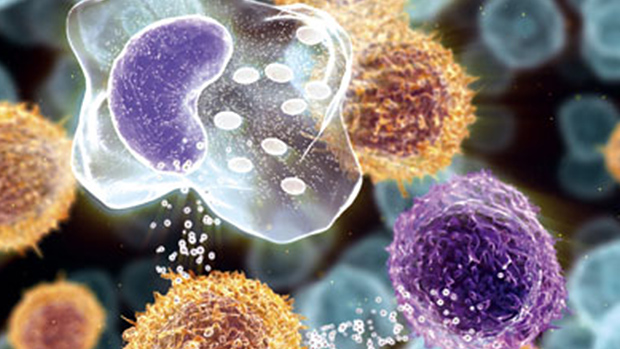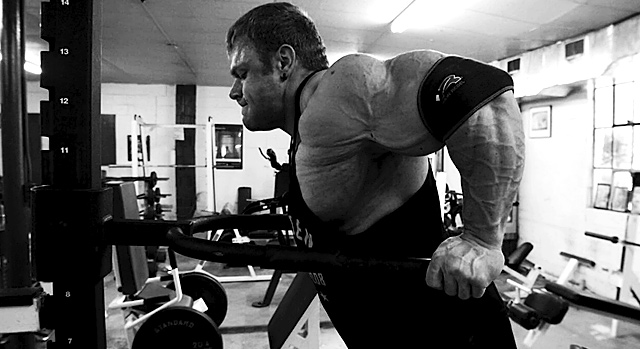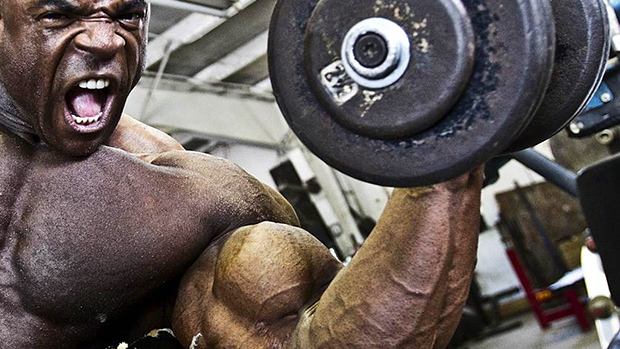Rest, ice, and Celebrex. If you've got a sprain, a
strain, a tendonitis, a tendonosis, a fracture, or any other sports
injury, you're likely going to leave the doc's office
with the same prescription. Rest, ice, and Celebrex.
Unfortunately you're unlikely to hear about the healing
benefits of curry powder, garlic, pineapple, cocoa, tea, and
blueberries. Nor will you be advised to increase vitamin A,
vitamin C, copper, or zinc intake.
You probably won't walk away with a prescription for fish
oils. And you certainly won't be given a stack of
glutamine, HMB, and arginine.
Maybe it's because your doc thinks this is too much to
remember. Or maybe your doc isn't up on the latest
nutritional research. Regardless of the reason, it's a
shame as nutrition plays an important role in injury repair.
From boosting immune function, to improved collagen deposition, to
a more rapid return to function, the right nutritional intake can
make a big difference.
 |
There's more to treating injury that
ice!
Nutrition and Injury Repair
Although we may perceive injury as chaotic — with the
pain, swelling, and dysfunction — when we look at things biologically we see that injury does lead
to an organized, consistent pattern of repair. Researchers and
clinicians typically break this pattern down into 3 defined stages.
Stage 1 — Inflammation
This stage lasts up to 4-5 days post soft tissue injury (2-3
weeks in bone injury) and is in place to clear out injured tissue
debris.
Stage 2 — Proliferation
This stage comes after inflammation and lasts about 2-3 weeks
(10-12 weeks in bone injury) and is in place to form temporary
replacement tissues. These tissues are usually weaker than
the originally injured tissues yet still provide some structure and
function to the site of injury.
Stage 3 - Remodeling
This stage comes after proliferation and can last up to 1-2
years (even longer in bone injury) and is in place to form new
tissues nearly as strong as the original tissues.
By understanding this process of injury and injury repair,
scientists can look at each step in the repair process, targeting
different nutritional angles in the support of injury
recovery. These targets typically fall into the following
three categories:
1. Nutritional strategies that promote, yet manage, acute
inflammation.
2. Nutritional strategies for supporting immune
function.
3. Nutritional strategies that support long term tissue healing
and regeneration.
As inflammation is the most acute and problematic phase, one
major goal of any injury repair protocol should be to support (but
manage) the inflammatory process. While most folks think
inflammation is a bad thing, it's important to know that the
inflammatory process is critical and that any strategy designed to
eliminate inflammation or blood flow to the injured area should be
avoided. However, pro-inflammatory agents should also be avoided as
excessive inflammation could increase total tissue damage, slowing
down the repair process.
 |
Further, a secondary goal of managing inflammation is to reduce
pain, as pain can cause biomechanical compensations/changes that
can lead to secondary injury as well as restrict movement necessary
for the development of strong, functionally adapted replacement
tissues. However, again, strategies that eliminate pain often
target inflammation. And in this case, the elimination of
inflammation (and pain) may also reduce healing.
With these goals in mind, it's time to think about how
specific macronutrient and micronutrient interventions can help
manage inflammation, boost immune function, and help lay down
stronger replacement tissues more quickly. We'll talk
about each of these in this article.
Dietary Fats and Inflammation Management
A diet high in trans-fats, omega 6 rich vegetable oils, and
saturated fat will be pro-inflammatory while a diet high in
monounsaturated fats and omega 3 fats will be
anti-inflammatory. Of course, most of us already know that
it's the ratio of omega 6 to omega 3 in the diet that helps us
maintain a balanced inflammatory profile, but this refresher lesson
is often necessary during periods of injury
recovery.
Another required refresher is the fact that beyond 3s and 6s,
the overall fat balance is important here. With a good balance of
saturated, monounsaturated, and polyunsaturated fats (about 1/3 of
total caloric intake each), the body's inflammatory profile will
most likely fall right into line — especially during periods
of injury repair.
To this end, the following simple strategies should go a long
way during injury repair and even during injury
prevention:
To balance your fats:
Increase intake of olive oil, mixed nuts, avocados, flax oil,
ground flax, and other seeds, etc., making sure to get some of each
fat source every day. By eating these foods, you'll likely balance
out the saturated fats naturally present in your protein sources,
leading to a healthy profile without breaking out the
calculator.
To balance your 6:3 ratio:
Add 3-9g of fish oil each day while reducing omega 6 fats like
vegetable oils such as corn oil, sunflower oil, safflower oil,
cottonseed oil, and soybean oil, etc. This strategy should take
care of your omega 6:3 ratio.
Using Herbs and Phytochemicals to Manage
Inflammation
Beyond healthy fat balance, certain foods and herbs can be very
beneficial in the management of inflammation. These herbs
include:
Turmeric
Current research shows that the active ingredient, curcumin, is
responsible for the anti-inflammatory benefits of turmeric.
As turmeric is present in curry powder, you could start by adding
curry to your diet, although a better strategy would be to add
400-600mg of turmeric extract 3x per day to manage
inflammation.
Garlic
Garlic has been shown to inhibit the activity of certain
inflammatory enzymes and impact macrophage function. Again,
although eating more garlic is a good start, supplementing with
600-1200mg of aged extract likely works best.
Bromelain
This is another anti-inflammatory plant extract that comes from
pineapple. While best known for its digestive properties,
it's both an anti-inflammatory and analgesic. Doses of
500-1000mg/day should do the trick.
Boswellia
This tree extract also has anti-inflammatory properties and is
usually used in 300mg doses 3x per day.
Flavanoids
Cocoa, tea, red wine, and certain fruits and veggies are high in
the anti-inflammatory flavanoids. Again, while an increase in
consumption of flavanoid foods would likely be of benefit during
times of acute injury, blueberry or grape extracts, green tea
extracts, citrus extracts (hesperedin, naringin, etc), and
bioflavonoid supplements containing quercetin/dihydroquercetin and
rutin may lead to more marked anti-inflammatory effects.
With all of these nutrients, caution is warranted as wholesale
suppression of the inflammatory response in the body isn't
warranted during the acute phases of injury. The idea here is to
control inflammation from getting out of control, not stop it from
happening.
So, in the end, the key is not to load up on all of these
anti-inflammatory supplements at once. Rather, focus on foods rich
in natural inflammation modulating agents such as these below, only supplementing if inflammation becomes a major/chronic
problem(this would likely be discussed with your physician
first).
Curry powder/turmeric
Garlic
Pineapple
Cocoa
Tea
Blueberries
Calorie Needs During Injury
It should be no surprise that energy needs during sport are
increased and this is due to the energy cost of activity. As a
result, some athletes, especially females, intentionally (to lose
body weight) or unintentionally (due to improper nutrition
education) under eat.
This can lead to an increased incidence of stress fractures,
ligamentous injury, etc. So, on the one hand, too few calories when
healthy can lead to injury. On the other hand, too few calories
during recovery from injury can prevent an athlete from getting
healthy.
 |
During acute injury, energy needs are increased. In fact, BMR
may increase by 15 - 50% based on the severity of the trauma. For
example, sports injury and minor surgery may increase BMR by
15-20%, while major surgery and burn injury may lead to a 50%
increase in BMR. When trying to determine energy needs during
recovery from injury, it's important to consider this increase in
energy requirement.
Of course, comparatively speaking, an athlete will have to eat less
during injury recovery than during training and competition. Yet if
they return to baseline intake, they may be under eating.
Let's take the example of a young athlete here.
Example Athlete
Male - 14y
5'6", 140 lbs
Basal Metabolic Rate
1611 kcal/day (based on the mean of 3 predictive equations)
Energy needs when sedentary
1933 kcal/day (based on activity factor of 1.2)
Energy needs with daily training/competition
2739kcal/day (based on activity factor of 1.7)
Energy needs during injury recovery
2319kcal/day (based on activity factor of 1.2 and a 20% increase in
metabolism due to injury)
As you can see, although energy intake should decrease (relative
to training and competition) during periods of injury repair,
returning to baseline intake will lead to underfeeding.
Macronutrient Needs During Injury
When it comes to the macronutrients, increased dietary protein
is recommended for injury repair. These increases are based on
increasing the clinical recommendations from the usual 0.8g/kg to
1.5-2.0g/kg.
Since many athletes will already be hitting this 1.5-2.0g/kg
mark, these needs should be covered. So, if a rapid return to
normal function is desired, this is one area that should not be
neglected. Injured athletes should absolutely strive for 1g of
protein per pound of body weight as a minimum.
Dietary fat has already been discussed and to recap, the idea is to
balance out dietary fat by getting about 1/3 of total fat intake
from each of the three types of fat. Further, the omega 6:3 ratio
should come down to anywhere from 3:1 to 1:1.
As far as dietary carbohydrate, while glucose is necessary for
athletic injury healing, no specific carbohydrate recommendations
have been established for injury periods. However, dietary
carbohydrate should likely be included in sufficient amounts to
ensure adequate micronutrient intake as well as stable insulin
concentrations (which, as an anabolic hormone, may impact wound
healing).
Translating these recommendations above into practical strategies,
the following habits should help athletes ensure adequate calorie
and macronutrient intake for both sport and injury
recovery:
Frequency
Eat every 2-4 hours
Protein
Each meal/snack should contain complete protein including lean
meats, lean dairy, eggs, or protein supplements.
Vegetables and Fruit
Each meal/snack should contain 1-2 servings veggies and/or fruit
(1/2 - 1 1/2 cups or 1-2 pieces) with a greater focus on veggies.
Starches
Additional carbohydrates should come from whole grain, minimally
processed sources like whole oats, yams, beans, whole grain rice,
quinoa, etc. The athlete should eat fewer starches when not
training (such as during injury recovery), and more when training
(unless fat loss is a goal), but a no carbohydrate or no starch
diet is unwarranted.
Fats
The athlete should eat each of the following good fats each day -
avocadoes, olive oil, mixed nuts, flax seeds, and flax oil. In
addition, 3-9g of fish oil should be added to the
diet.
Micronutrient Needs During Injury Recovery
When it comes to injury, vitamins A, B, C, and D as well as
calcium, copper, iron, magnesium, manganese, and zinc can all play
important roles. (Interestingly, vitamin E may slow healing so it's
recommended to avoid vitamin E supplements during injury.)
Some of these micronutrients act in permissive roles and others
can actually stimulate healing. Until further research
confirms these roles, there's controversy as to whether it's simply
the prevention of vitamin/mineral deficiency we're after or whether
the ingestion of additional vitamins and minerals can be of
additional benefit.
So rather than discussing each vitamin and mineral that may
impact injury recovery, let's discuss only those that may require
additional supplementation. In the end, it appears that the
following vitamins and mineral supplements would benefit those with
acute injuries:
Vitamin A — 10,000IU/day for 2-4 weeks
post-injury
Vitamin C — 1000-2000mg/day for 2-4 weeks
post-injury
Copper — 2-4mg/day for 2-4 weeks
post-injury
Zinc — 15-30mg/day for 2-4 weeks
post-injury
Additional Nutrients That May Impact Injury
Recovery
Supplemental amino acids have been shown to exert powerful
effects on injury healing. When the body is under stress, arginine
and glutamine become conditionally essential amino acids and these
as well as the following amino acids have been shown to speed up
healing process in the body:
Arginine
Studies using arginine in rodents and humans have demonstrated the
potential of high dose arginine supplementation to increase
collagen accumulation, reduce lean body mass loss, reduce nitrogen
excretion, and accelerate wound healing. Human doses have been in
the range of 15-30g per day with higher doses having the largest
effect.
Ornithine
Studies using ornithine in trauma/injury situations have shown that
ornithine can shorten healing time, increase healing strength, and
increase nitrogen retention. Human doses in these studies have been
in the 20-30g/day range (10g 2-3x per day) with larger doses having
the greatest effect.
Glutamine
In one study, the combined administration of 14g arginine, 3g HMB,
and 14g glutamine in two divided doses (two doses of 7g arginine,
1.5g HMB, 7g glutamine per day) for 14 days significantly increased
collagen synthesis in adults.
HMB
Research has shown that HMB increases collagen deposition in
rodents as well as improves nitrogen balance in critically injured
adult patients. Again, in one study, the combined
administration of 14g arginine, 3g HMB, and 14g glutamine in two
divided doses (two doses of 7g arginine, 1.5g HMB, 7g glutamine per
day) for 14 days significantly increased collagen synthesis in
adults.
At this point, before loading up on amino acids, it's important
to note that many of the studies discussed in this section were
performed in either the elderly or in hospitalized patients. In
both cases malnourishment is common. Therefore it's likely that the
amino acid supplements above were eliminating relative deficiencies
rather than being added to a healthy diet that's already adequate
in dietary amino acids.
Of course, this point doesn't necessarily disqualify amino acid
supplementation as a viable option for an athlete experiencing a
sports injury. Indeed, many athletes may be poorly nourished as
well, under eating both total calories and protein. As a result, in
such cases, the first priority is to increase calorie and protein
intake during recovery as discussed above (including about 1g of
protein per pound of body weight).
However, even in well-nourished individuals, it's likely
it's still beneficial during sports injury to supplement with
amino acids in order to stimulate collagen deposition and injury
healing. The combination of arginine (7g 2x per day), HMB (1.5g 2x
per day) and glutamine (7g 2x per day) will likely preserve lean
body mass while recovering from injury. At the same time,
this approach may accelerate collagen synthesis and injury
repair.
 |
Summary
In summary, sports injury recovery is characterized by an
organized response to the acute trauma. First, inflammation is
provoked to remove damaged tissues. Next, cells proliferate to
replace the damaged tissue. And finally new cells replace the
intermediary cells to strengthen the repair process and lead to
injury resolution.
During each step of the repair process, specific nutritional
strategies can be employed to both support and enhance this repair
process. The following are most useful:
1. Eat every 2-4 hours.
2. Each meal/snack should contain complete protein including
lean meats, lean dairy, eggs, or protein supplements (if whole food
is unavailable).
3. Each meal/snack should contain 1-2 servings veggies and/or
fruit (1/2 - 1 1/2 cups or 1-2 pieces) with a greater focus on
veggies.
4. Additional carbohydrates should come from whole grain,
minimally processed sources like whole oats, yams, beans, whole
grain rice, quinoa, etc. The athlete should eat fewer starches when
not training, and more when training. Although a no carbohydrate or
no starch diet is unwarranted.
5. The athlete should eat each of the following good fats each
day - avocadoes, olive oil, mixed nuts, flax seeds, and flax oil.
In addition 3-9g of fish oil should be added to the diet.
6. The athlete should include the following anti-inflammatory
foods: curry powder/turmeric, garlic, pineapple, cocoa, tea,
blueberries, and wine.
7. The athlete should include the following supplemental
vitamins and minerals for 2-4 weeks post-injury — vitamin A,
C, copper, and zinc.
8. A combination of arginine, HMB, and glutamine should be
supplemented to help preserve lean body mass while accelerating
collagen deoposition.
Of course, when faced with an injury, nutrition isn't the
only thing athletes should consider. Progressive rehab
centers are using additional adjunct therapies including
prolotherapy, intra-articular and/or site specific injections of
hyaluronans, autologous platelet concentrates, and other
therapeutic compounds to speed up injury repair and to improve
chronic injury/pain prognoses. And, of course, conventional
rehab and physical therapy is conventional because it works.
In the end, if you're faced with an injury, it's
important not to just sit it out with rest, ice, and Celebrex and
hope for the best. Rather, be proactive with your nutrition,
your therapy, and with your adjunct treatment strategies so that
your healing is rapid and complete.




